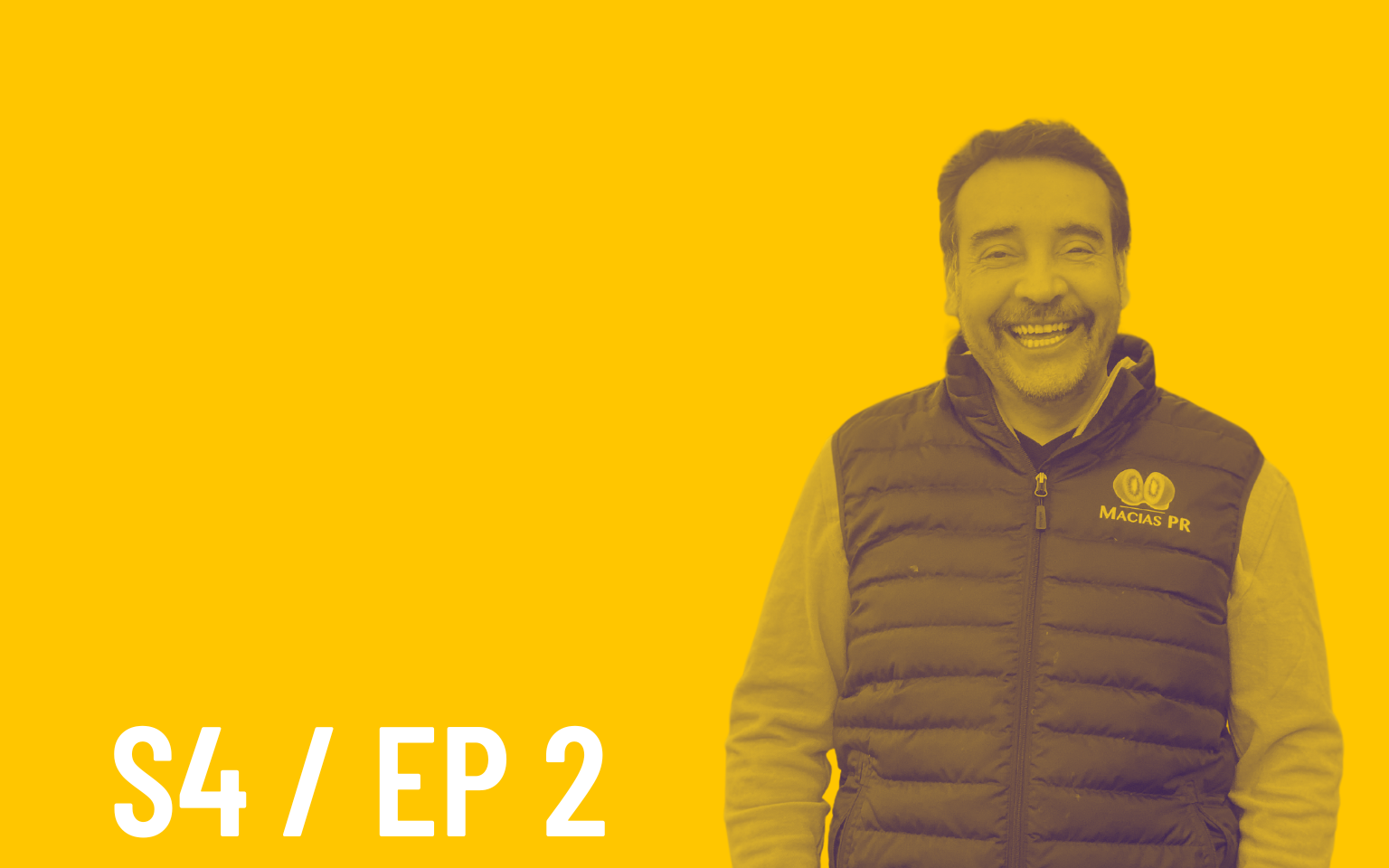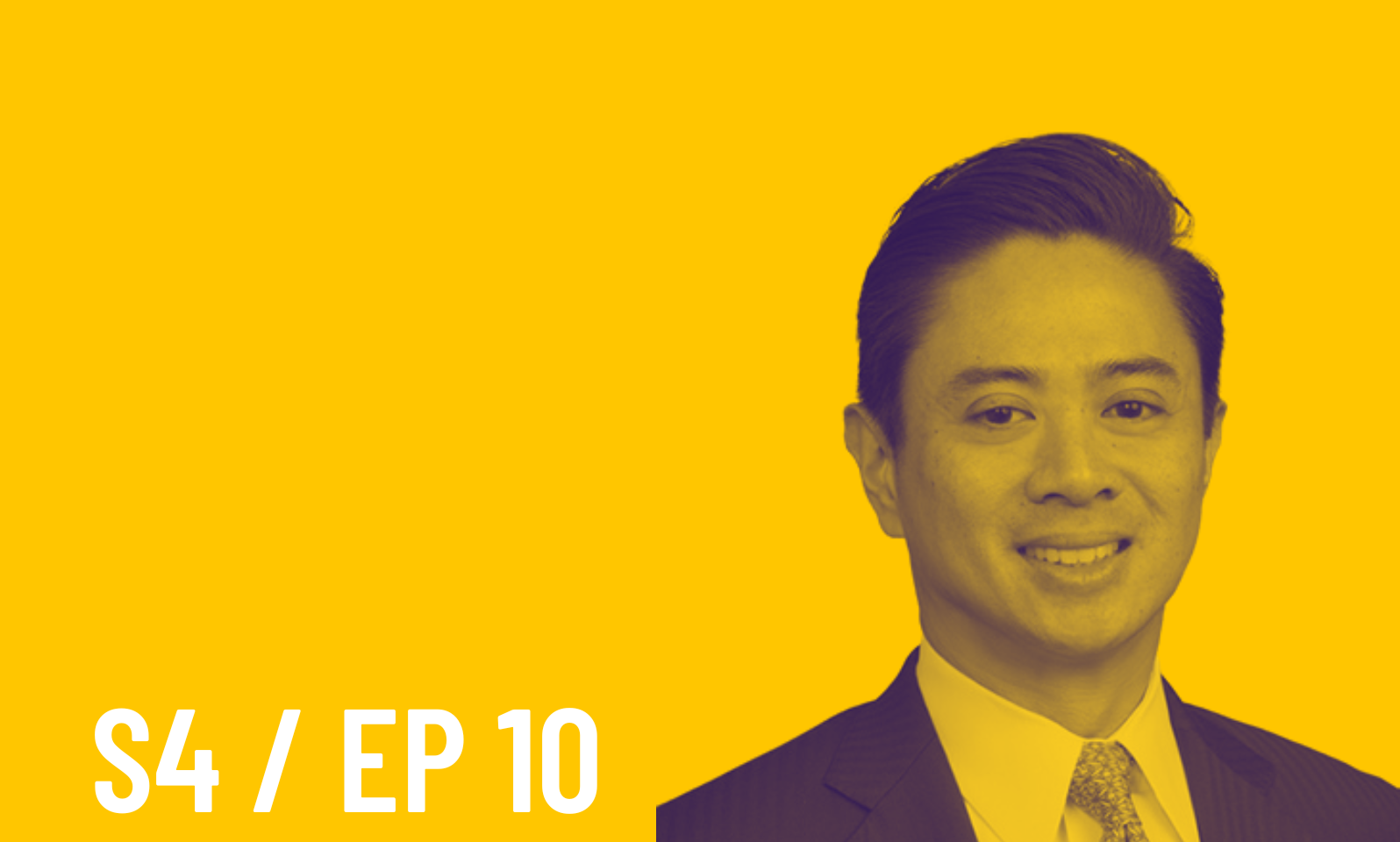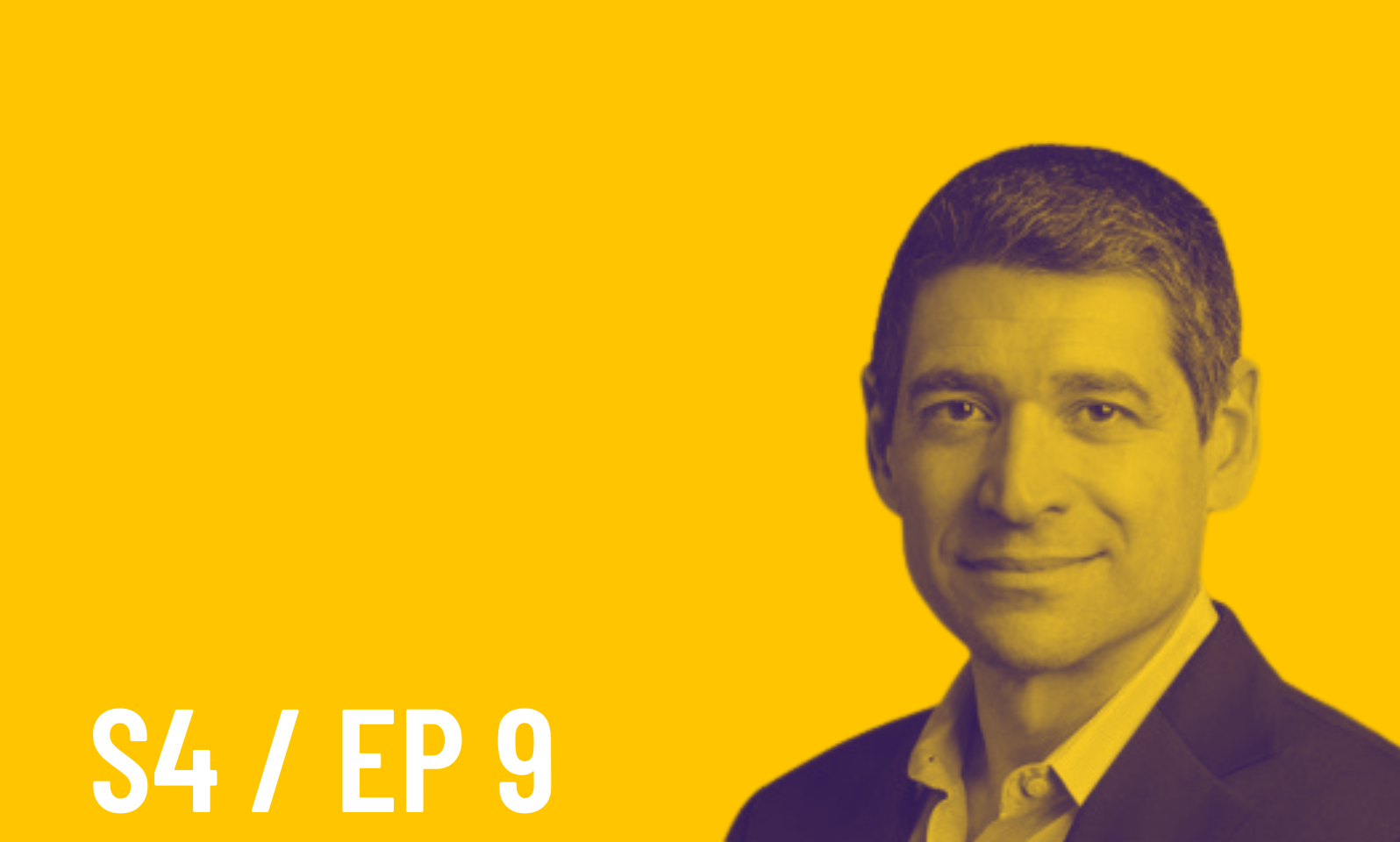Campaign 2020: Health Policy Edition
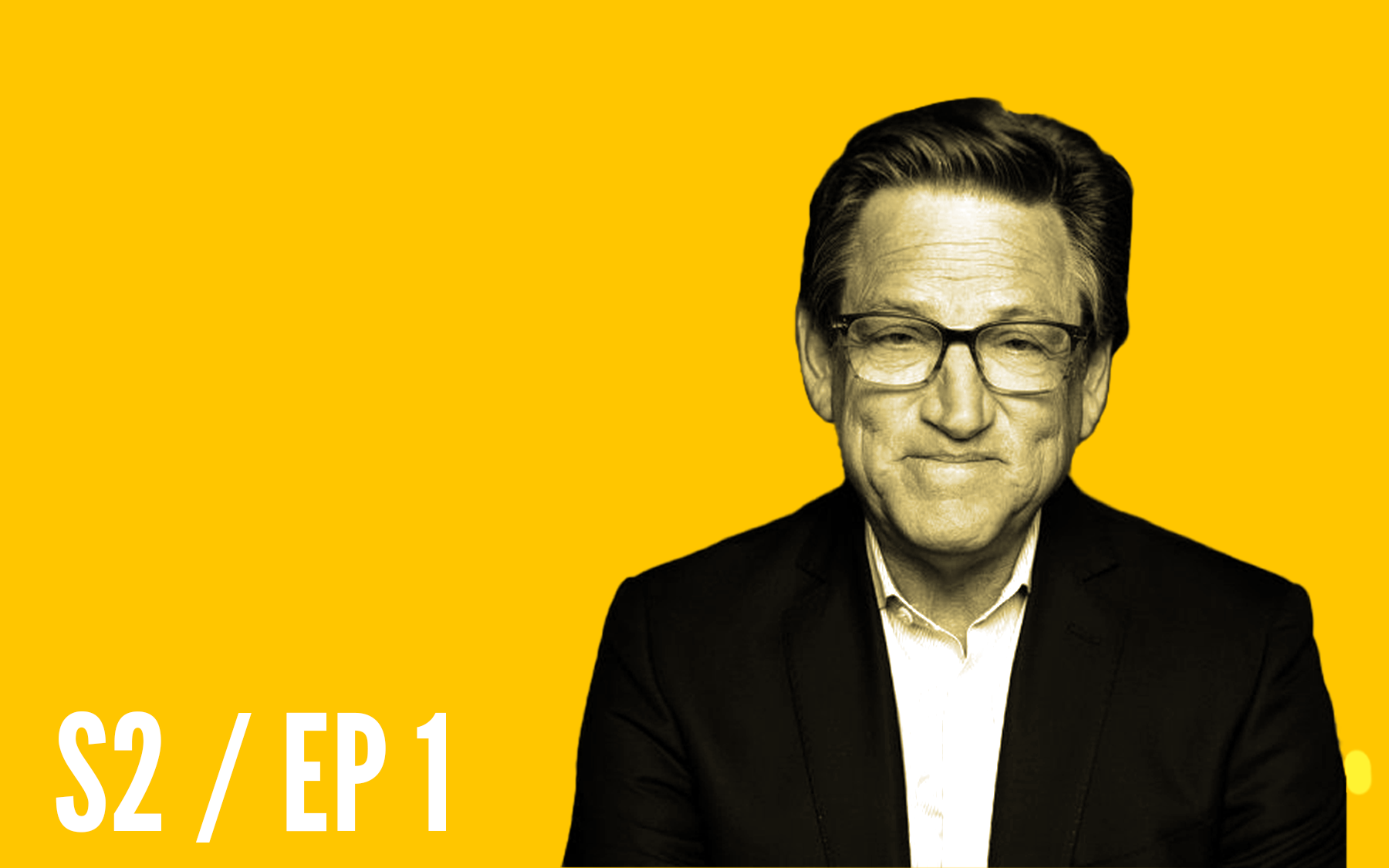
Episode 1, Season 2
Campaign 2020: Health Policy Edition
- September 14, 2020
- 00:42:24
We sat down with Paul Keckley to discuss healthcare policy amid the upcoming election, the future of our healthcare system, and how marketing has fueled the profitability of some of our country’s largest healthcare programs.
Listen on
Episode Description
Paul Keckley is Managing Editor of The Keckley Report, a healthcare policy analyst and widely known industry expert. We sat down with Paul to discuss healthcare policy amid the upcoming election, the future of our healthcare system, and how marketing has fueled the profitability of some of our country’s largest healthcare programs.
In this episode, we discuss:
- Campaign 2020: the outcome’s implications for healthcare in America
- The intersection of healthcare industry and policy (and the disconnect between the two)
- How marketing influences different healthcare programs such as Medicare Advantage
- Crazy statistics around healthcare policy in the U.S.
- The future of healthcare in the U.S.

“What would happen if you were buying health care and everything was an individual purchase decision – would that market evolve better over time?”
Paul Keckley
Managing Editor, The Keckley Report
More From This Episode
Show Notes
Transcript
Recommended Reading
Show Notes
( 2:45 ): Paul shares how the Catholic Daughters of Charity gave him his start and how the work he did for them eventually resulted in the birth of The Keckley Report, now in its 20th year
( 3:50 ): Paul points out a gap in understanding between the healthcare industry and policymakers in Washington, and his efforts to bridge that gap in a nonpartisan way
( 5:00 ): Kriste asks Paul how he walks the tricky line on nonpartisanship in his work and in his weekly Keckley Report
( 6:00 ): Paul explains how he relies on the data to show him the way
( 9:40 ): Kriste asks Paul about his other work (how he pays the bills, since he offers The Keckley Report for free)
( 10:16 ): Kriste asks Paul how he deals with clients who don’t respond well to things he may uncover or discover in his studies
( 11:39 ): Paul talks about data manipulation as a marketing tactic, calls out U.S. News & World Report hospital rankings and points to what hospital performance measurement methodologies actually matter
( 14:36 ): Kriste asks Paul to unpack, “Why is this the most consequential election in modern history?”
( 18:25 ): Paul answers the question, “Has our psyche about healthcare changed as a result of COVID?”
( 19:25 ): Kriste asks Paul, “What’s going to be the biggest change in healthcare with this election?”
( 20:20 ): Paul discusses why it’s suddenly sexy to talk about the social determinants of health
( 20:50 ): Kriste asks, “Has the pandemic exposed flaws in the healthcare system?”
( 23:35 ): Kriste asks Paul about his take on Oak Street Health’s recent IPO in a previous Keckley Report, asking, “Why is the discussion around Medicare Advantage and providing a better care experience and quality of care for the senior population growing?”
( 26:12 ): Kriste asks Paul, “How much of Medicare Advantage’s success with seniors is tied to marketing?”
( 28:11 ): Paul discusses the profitability of healthcare incentivizing retailers to dip into the primary care space
( 28:25 ): Paul gets hypothetical with a Joe Biden election win and what healthcare policy will look like
( 30:00 ): Paul talks about the disadvantages of Medicare Advantage for certain senior populations
( 30:45 ): Paul calls Medicare Advantage “the front door to managed health” toward which Medicaid plans will move
( 31:00 ): Paul gives his predictions for the future of Medicare and Medicaid
( 31:25 ): Paul says, “Now the public’s health is not just the haves and the have nots – it’s specific populations.”
( 31:55 ): Paul notes that 60% of the population is covered by the federal government today
( 32:33 ): Paul gives the Democrat vs. Republican healthcare policy breakdown
( 34:00 ): Paul says “time will tell” which public-private healthcare system will work for the U.S.
( 34:40 ): DID YOU KNOW? The U.S. government gives $250 billion in tax write-offs per year to companies providing health insurance to their employees?
( 34:50 ): Paul poses the question, “What would happen if you were buying health care and everything was an individual purchase decision – would that market evolve better over time?”
( 36:03 ): Kriste asks Paul about “healthcare shopping” under the current healthcare system
( 37:00 ): Paul compares a public-private healthcare system to a public vs. private higher education – you’re going to pay extra for private in either circumstance
( 37:40 ): Paul describes education as “a great analog for everything in healthcare right now”
( 38:37 ): Kriste reconsiders her career path, noting she might pursue employment with Microsoft
( 39:40 ): Paul poses a few “What if?” questions about education, including, “What if medicine is experience-based learning? What if we don’t need to put people through four years of clinical training after their undergraduate degree and then 3-5 years of residency? What if you blow up our way of producing healthcare workers?”
( 41:00 ): Kriste wraps the show, asks Paul if he’ll come back and give his “take”
Transcript
[00:00:53.350]
[KRISTE] Hello and welcome to the show. In this episode of How it’s Done, I’m here with Paul Keckley. Paul is managing editor of the weekly report and a very well-known healthcare policy analyst and expert in the healthcare field.
[00:01:09.170]
[KRISTE] Today, we’re going to talk about Paul’s latest Keckley report because we just kicked off a new phase of the 2020 campaign for the White House and beyond, and there’s going to be a huge impact, obviously, on healthcare, the outcome of those elections.
[00:01:26.980]
[KRISTE] Paul is going to unpack some of the complexity of that on today’s podcast. We’re going to take a deeper dive into the Keckley report from this past week, which was titled “Health Policy in Campaign 2020: Comparisons, Contrasts and Reality.” Paul, welcome to the show!
[00:01:47.920]
[PAUL] Thank you, thank you. Your coffee’s good.
[00:01:50.880]
[KRISTE] Well, I’m glad you like it. It’s my favorite. It’s Bustelo. It used to be a Cuban brand, but it was bought out by Maxwell House a few years ago. There’s some people out there, believe it or not, who might not know you. Can you tell us a little bit about yourself, how long you’ve been doing the report and the reasons behind the report?
[00:02:12.190]
[PAUL] I began doing studies about hospitals right out of grad school in ‘74. It was by chance that the Catholic Daughters of Charity were trying to figure out what they were going to be doing one day, and I did some studies for them and I got totally immersed in the economics of healthcare, in the policies of health care, and kind of have done this ever since.
[00:02:53.680]
[PAUL] The Keckley report is now in its 20th year, and I started doing it because […] I’ve never charged a nickel for it and I always felt that I needed to do something that was for a greater good and do it in a nonpartisan way. But more important to connect industry and policy because when I’m in Washington, all the Washington people talk about the laws and the regs and know precious little about industry. And when I’m in the industry groups with boards and hospitals or plans or medical groups or whatever, they have strong opinions about policy, but they rarely have an understanding of how policy is created.
[00:03:42.550]
And it’s interesting, these two worlds talk about each other as if they understand each other and they don’t. So my view of that is we need to connect policy and industry, both through the rearview mirror – how did we get here? – and then forward – what policies need to change? – and we need to do that in a nonpartisan way.
[00:04:07.990]
[PAUL] So I knew I was doing that when I had to wear a bulletproof vest in a series of months because I was getting accused of being a pinko commie because I was involved in the White House with the Affordable Care Act in 2009-2010. But I was also being accused of not being as supportive as I needed to be of universal coverage and Medicare for All, because that law is basically a centrist law. It’s not as far left as you’ll hear in the next 70 some-odd days. So [The Keckley Report] reflects a view that’s not partisan.
[00:04:59.740]
[KRISTE] How do you do that? That is a very tricky line to walk, especially in these times when everything is so extreme left or extreme right and there’s very little middle ground. How do you do that?
[00:05:12.190]
[PAUL] I’m a data guy, so I let data tell me that. I don’t let […] when I was listening this morning, I listened to CNBC and MSNBC and Fox and CNN and I read all the stuff and get all my reports, but I go to original sources. So if a study is cited, I don’t report what somebody said about the study – I read the study. And I read the methodology and see if it’s biased in the methodology. And I let data take me where it needs to go.
[00:05:53.070]
[PAUL] I don’t begin with a presumption of whether the way that was reported was accurate or not. That to me is foundational to what I’ve done. It’s let data answer the question. You can interpret data a number of ways, so be fair about that. To begin with the data, what does the data really tell us? So an example would be, how affordable is healthcare? Who decides that? How do various groups who talk about the affordability of healthcare is such a big issue, which will be true for the next several years? How do you define that?
[00:06:40.160]
[PAUL] If everybody — it’s kind of like quality of care. Everybody talks about how great the U.S. system is and the quality of care. But based on what? What’s the data? Or the cost of care? Or access to care? So all of those issues, there’s underlying data that you have to explore. And the thing that I try to do each week is assemble a file that ends up being about 30,000 words a week that kind of is a set of studies that have appeared in peer reviewed or credible journals, and then I try to zero in by the Saturday afternoon of which ones are the most important. And then I write from there.
[00:07:32.100]
[KRISTE] And for those who aren’t familiar with your Keckley Report, you also include your resources at the end of each newsletter with links to those. So anyone who wants to go read any of these —
[00:07:44.980]
[PAUL] I welcome that. I want people to feel that I’ve tried to summarize it objectively and that they can check me on that. Hold me accountable for that. And honestly, it’s a discipline that every week I have to sharpen them a little bit more because you take bullets for anything.
[00:08:12.570]
[KRISTE] Oh, I bet you do. Do you get emails and phone calls and text messages? Because you’ve got a lot of friends in the industry.
[00:08:20.330]
[PAUL] I’ve gotten death threats. I’ve had people to say I’m going to blackball you from this or that.
[00:08:30.330]
[KRISTE] And continue to wear your – not a literal bullet proof vest, but you basically probably just wear a bulletproof vest, you know, to shield yourself and not be taken down some of those paths.
[00:08:40.950]
[PAUL] At the end of the day, you’re going to, you know, leave your mark based on some purposeful, worthwhile work you do. And this for me is that. If I can help people understand a complex issue, not prescriptively, if it’s unclear as to what this really means or there are three or four options, then I want to unpack those three or four options and let them decide. So for me, that’s why I do it.
[00:09:17.760]
[PAUL] I’m literally happy about and sometimes I get frustrated about how I don’t monetize it. […] If anybody wants it, that’s fine. […]
[00:09:31.020]
[KRISTE] But you are for hire for, say, maybe a health care company that wants to explore an issue or get really wise on a subject or understand how to educate the public around what they’re doing.
[00:09:49.290]
[PAUL] Oh, I do two other things that pay the bills. I do proprietary studies, so I did a lot of work on how private equity is investing in medical groups for the American Hospital Association. So I’ll do studies from time to time that I get paid to conduct. But I don’t compromise the methodology in those studies.
[00:10:16.080]
[KRISTE] Do they sometimes not like what you find?
[00:10:18.080]
[PAUL] Yes. Yeah.
[00:10:19.080]
[KRISTE] How do you deal with that?
[00:10:21.690]
[PAUL] Well, you make clear up front that any communication about a study has to be objective. It has to be consistent with the methodology. I learned that when I was doing work in D.C. and I would do studies, a forecast of something, and I’d see reference to it in the federal register from a member of Congress that had, you know, picked that number from the study to say, “This is the number.” So I developed a kind of a standard – you can’t rescind, without a full body of the data, this document to anybody. But if you do that, that’s fine.
[00:11:05.240]
[KRISTE] So this podcast is, you know, I call it a podcast for curious marketers because that’s the business that I’m in, is, you know, marketing and communications. And so marketers and communicators are all the time, to your point, looking at data and bringing out just the data that maybe they want to use to the case. So in that sense, I mean, this is happening all the time all around us and there’s political spin and there’s marketing spin, and there’s—
[00:11:29.780]
[PAUL] Oh, my gosh […] I’ve been unpacking some data on the latest U.S. News & World Report top hospitals, which ironically—they’re on a roll—which are 20 hospitals, not a single one from the southeast, closest is Houston. But you look at that and then you look at the Leapfrog, and then you look at the CMS Star ratings and you look at the stuff that key insurance companies are putting out. You can be on a roll with U.S. News & World Report and actually run an unsafe and unaffordable hospital.
[00:12:20.090]
[KRISTE] Wow. So are you saying that it’s really just all marketing?
[00:12:24.770]
[PAUL] Well, U.S. News & World Report has its methodology. So the key for a consumer, for a marketer, is what’s the methodology? And what matters? And will we get to the point where—there are 800 measures right now of hospital performance in various public domains. About a fourth of those deal with the patient experience. Patient’s kind of an odd term now, but it’s their experience. But how much of that experience is related to the accuracy of the diagnosis, the appropriateness of the treatment, the underlying cost, or the necessity of the procedure? So we don’t have a system that’s made it easy for anybody to evaluate what we do.
[00:13:21.270]
[KRISTE] And isn’t that by design?
[00:13:22.270]
[PAUL] Absolutely. Complexity is in our favor. Complexity keeps the wind at our back because we’re a B2B industry, we’re not a B2C industry, and if we don’t keep that B2B relationship, we can’t mark it up and pass it through and then blame somebody else for it.
[00:13:42.440]
[KRISTE] Hey, this is a great segway, I think, to some of the things that you covered in this week’s newsletter in health policy. One of my favorite parts of your newsletter every week, because it’s so chocked full of information and I literally, a lot of times, have to read it several times to take it all in.
[00:13:58.330]
[PAUL] I’m flattered. I’m glad.
[00:14:01.330]
[KRISTE] I go back to it a lot. But my favorite part is at the end, every week, you have “My Take.” So that’s where you really summarize everything and that’s where we kind of get, “Okay, you’ve laid out all these things for us, Paul. What’s your take?” And this week, your take was that basically for the healthcare industry, this is the most consequential race in modern history and then campaign promises aside, two issues that will shape how health policies change in the next four years. Your take is that that’s the coronavirus impact on the American psyche and also economic recovery. Can you talk about that a little bit more in the context of what does that mean exactly? And why is this the most consequential election in modern history?
[00:14:46.430]
[PAUL] Well, the election, you have an unbelievably divided populace based on any objective measure. You’ve got just about everybody in their camps taking shots at the other camps. Healthcare is 29% of the federal budget, it’s up to 35% of a state’s budget, it’s 14% of a household’s discretionary spending, and the fastest growing line item in all three. So we built a system that doesn’t force anybody to say how much is this going to cost and who’s going to bear the brunt of that?
[00:15:37.520]
[PAUL] It’s not a market-based system. It’s a regulated system that has allowed everybody in the system to mark up and pass through what they say their costs are. So let’s just take those two things that kind of make this consequential. We’re going into an era where we have the highest level of fiscal debt we’ve had in our country’s history – $26.5 trillion. And that’s before Congress adds another phase of relief funds. So why does that matter to Joe Sixpack?
[00:16:23.410]
[PAUL] It doesn’t if you just assume that we can just keep absorbing healthcare, getting bigger and bigger and no one gets hurt by that. But people are getting hurt by it. So, if health care was 20% of our GDP—it’s about 18% right now—and every company’s bottom line, every employer’s bottom line, was cut in half because you need to pay for employee benefits, then I bet employers would get pretty upset. If employers said, “I don’t need to provide health benefits anymore, there’s no law that requires it.” And this is a fact. There isn’t a law that requires it. There’s a law that says if you provide a benefit, you can’t be preferential and you can’t be hurting certain members of your employees and not others.
[00:17:24.600]
[PAUL] So what would happen if employers said, “To hell with it? I just want to get out of this altogether. I don’t provide auto insurance. Why should I provide health insurance?” So employers are amassing their influence to address this issue of the economics of healthcare are not sustainable. Simply not sustainable.
[00:17:50.650]
[PAUL] And then it’s compounded by the fact that we added $2.4 trillion to the deficit as a result of COVID, and as we’ve dealt with that, we’ve said this is kind of a blunt instrument with lockdown and social distance and let’s wear masks and people got scared. We’ve had 922 deaths of healthcare workers, and the media report people are afraid to go back to the doctors and afraid to go to the hospital.
[00:18:26.960]
[PAUL] So has our psyche about healthcare changed as a result of COVID? I think so.
[00:18:34.670]
[PAUL] So now you’ve got the compound effect of a changed psyche where we’re worried, this is not going away soon, and this economic reality that we can’t afford the system we built. And the sad part of the second there is that it’s not a system, it’s a collection of sectors that operate their own businesses and feed at the same trough. So all of those are a collision course with where we are and where we’re going.
[00:19:13.100]
[PAUL] I don’t think four years from now, regardless of whether it’s Trump or Biden, the system will look the way it does today.
[00:19:22.680]
[KRISTE] What’s going to be the biggest change, do you think?
[00:19:27.680]
[PAUL] One system-ness. We have to connect the dots between public health and preventive health in the private system. They operate in separate universes. And ironically, this is the policy’s part of this. Most of the funding for public health comes from state and local government. Most of the funding for the health care delivery system is federal.
[00:19:53.330]
[KRISTE] Right, well the coronavirus and the pandemic is really kind of shining a bright light on some of those issues.
[00:19:57.380]
[PAUL] And we were ripping funding out of public health and we found out that certain populations are more vulnerable—DUH. Like the system, just discovered social determinants. We’ve had risk factors and known this for 30 years, but now it’s suddenly pretty sexy to talk about it.
[00:20:22.040]
[KRISTE] So do you think it’s that urgency and what’s happening right now? And, you know, everything’s being exposed basically that that is what is going to force that real change?
[00:20:30.040]
[PAUL] Yes.
[00:20:32.040]
[KRISTE] There’s a lot of digital transformation investments that had been kind of slow walking and changes there that technologies weren’t really being effectively brought into healthcare. But now there’s a big acceleration of that because of the pandemic also. Do you think that’s going to have a huge impact?
[00:20:49.240]
[PAUL] Yeah, these terms are foreign to us in a lot of settings. But personalized nutrition, we knew food was medicine, but now we’re finding out some foods actually work better than medication that a doctor prescribes.
[00:21:08.660]
[KRISTE] Right. I’m fascinated by that.
[00:21:10.660]
[PAUL] And then you find out, “my God, a lot of the doctors don’t know too much about nutrition.” So the notion would be the technology-enabled self care, where the information I need about me is provided to me synchronously, which means real time. I’m getting my genomics, but I just went through Harris Teeter or Publix and I swipe the foods that I bought and my smartwatch is looking at my metabolism and the biometrics are telling me I should probably do this, not that.
[00:21:54.500]
[PAUL] It’s all funded through a system where primary care—not primary care doctors—primary care, big idea, prophylactic dentistry, nutrition, physical and mental health, where you have a relationship in primary care that is your coach. And what does that do? It reduces demand for all the stuff where most people make most of their money, which in markets like Nashville, where we reward you make as much money as you can in this industry because it’s wasteful and inefficient, we make a lot of money because we do a lot of crap that we shouldn’t do and the system lets us do that. So that’s future state. And that’s not going to happen because the people that are in the middle of this and doing well in the current state want it to happen.
[00:23:02.510]
[KRISTE] It will happen despite them because this is too big.
[00:23:07.130]
[PAUL] It happens despite them. Too big, and it hasn’t worked.
[00:23:10.250]
[KRISTE] It’s the tipping point, right? We are at a tipping point to quote Malcolm Gladwell.
[00:23:19.940]
[KRISTE] Okay Paul, so in last week’s Keckley Report, there was one thing that really caught my attention because I’ve been following this with great interest, if you could talk about it a little bit, and that was the Oak Street deal and the approach that they, […] there’s increasingly more competition in that space of Medicare Advantage and how do we really provide a better care experience and quality of care for the senior population? Why is that growing? What’s the importance of that and the significance of that if you had to sum it up?
[00:23:53.150]
[PAUL] The reason MA is growing is one, it had an advantage out of the gate in the Affordable Care Act. Medicare Advantage paid 13-14% higher rates for services than Medicare fee for service, so there was an inducement for providers, doctors and health insurers to sponsor Medicare Advantage plans. That has turned out to be the reason for its kind of exponential growth. It’s got some issues, but […].
[00:24:36.990]
[PAUL] The second is seniors are confused. If you’ve got to deal with Part A and Part B and Part D now the prescription drug benefit, that sounds a little confusing and confounding and it’s hard enough to understand it. So you get once a year these ads on TV that say, whether it’s Joe Namath or anybody, and they say sign up for our MA plan.
[00:25:11.450]
[PAUL] The MA plans do a great job of saying, “We’ll navigate on your behalf,” and there’s enough money and enough savings in the system that they can do that pretty well. The median additional costs for an MA plan over Medicare that’s out of pocket to consumers is $23. So if I say, “By the way, with this additional $23” —and some of the plans they’ll even charge them— “you get transportation, you get some additional help with supplements like vitamins and nutraceuticals.
[00:25:51.920]
[KRISTE] We’ll deliver food to you…
[00:25:53.750]
[PAUL] Yeah. So what they’ve done a great job of is attracting seniors who think this system is not coordinated to my benefit. That sounds like a good solution. And they lock them into these plans and keep them. The retention rates are pretty strong.
[00:26:11.750]
[KRISTE] How much of that is tied to marketing?
[00:26:14.120]
[PAUL] Most. When you look at the benefits in an MA plan from a marketing standpoint, think of three sets of benefits for an MA plan. The differentiator at tier one is the premium and doctors and hospitals that are in the network. So that’s tier one. Tier two is vision, dental, prescription drug. How is that handled? And then tier three, you’ve got “other.” So “other” can be transportation, “other” can be, “we’ll give you weekly something.” It can be supplements, it can be food, free WiFi— just a little of everything, supplemental benefits.
[00:27:07.120]
[PAUL] What MA has done is basically import all these social determinants as a lot of tier three things. So they’re kind of the test bed for a lot of this stuff. Now they’re finding out, “Wow, some of this stuff really impacts medical cost.” So some of these social determinants and supplemental benefits are moving up to tier two. Like, who would have thought that prophylactic dentistry would be so important to your physical health as a diagnostic for various gastrointestinal issues you might have? But if you’ve never been to a dentist or you can’t afford it, or it’s some kind of a separate product or a separate insurance plan you’ve got, that’s the simplicity. But that’s an example of kind of a tier two benefit that’s now becoming much more tier one. So this thing’s moving around.
[00:28:02.000]
[KRISTE] And is that why we’re seeing all of the retailers get into this business, partnering with folks like Oak Street?
[00:28:06.260]
[PAUL] Yeah. I mean, if you look at United and Humana, they’re a success. Between them they’ve got six, seven million members. It’s a profitable line of business, but it’s profitable because it reduces demand for unnecessary care. But it does it in a caring and friendly way. Great marketing.
[00:28:32.260]
[KRISTE] Yeah, great marketing for sure. And there’s going to be a huge competition in that marketing space because there’s only so many people, right?
[00:28:43.490]
[PAUL] Well, let’s add a wrinkle to this. I know you didn’t ask for this, but if a Biden were elected, then his plan is to increase Medicare eligibility from 65 down to 60. Now, you’ve added another 20 million people to the pot.
[00:29:01.220]
[PAUL] So we have 55 million seniors today that would be in the 70s. If Medicare Advantage continues to grow, then you could have from 27 million members of Medicare Advantage today, 45 to 50 million members within three years. So it’s a growth market, right?
[00:29:23.480]
[Kriste] Right, and kind of a brilliant political move by Biden.
[00:29:26.300]
[PAUL] It’s a great packaging of services for seniors who don’t want to be called seniors or treated as seniors. The downside of all this is sicker, more frail seniors have not been attracted to Medicare Advantage, and the cost associated with their care has disproportionately hurt certain types of communities and certain types of hospitals. So MA could be accused of skimming the market for healthier seniors. So there’s going to be a discussion around how you re-evaluate the risks of each of these Medicare populations so that sicker and more frail and more costly seniors, there’s more resources left in Medicare for them, and not all of it ends up in the hands of United and Humana and some of these other folks.
[00:30:26.090]
[PAUL] But otherwise, I think, you know, your point of the Oak Street, ChenMed, Privia—you go down the list, there are over 100 provider organizations, big health systems, that sponsor their own MA plans. So it is the front door to managed health that I think you’ll see Medicaid plans move toward. I think at some point we’ll have a discussion in the latter part of this decade of Medicaid and Medicare merging. It will be necessary because we’re a mobile society and we’ve converged public health and private health and we’ve got these primary care systems in place. So now the public’s health is not just haves and have nots, it’s specific populations.
[00:31:27.080]
[KRISTE] And is that some of the— “bigger than us” or bigger than any one individual or company or party—that’s some of that bigger driving force that will drive the change you’re talking about?
[00:31:36.860]
[PAUL] And it’s driven by the fact the federal government will drive it. If you take Medicare, Medicaid, federal employees, veterans health and military health, and put in another couple million of Indian health if you want, you’ve got over 60% of the population covered by the federal government today. That doesn’t include what will happen through these exchanges — the marketplace, activity in the states — which may end up being the individual insurance market.
[00:32:13.190]
[PAUL] So that says the federal government’s got a big stick. They could shape this, which is really the importance of this election. We’ll have a discussion around what’s the federal government’s approach to this? The jury’s out on that.
[00:32:32.420]
[PAUL] If you’re a Democrat, you’re thinking it’s one of two. We’re either going to push Medicare for all, which is kind of where they’re further left followers are, or it has to be kind of center left, which is the public option. We need a public option and let people let’s subsidize the ability of an individual to buy insurance from private companies.
[00:32:57.830]
[PAUL] And then there’s a view from the Trump camp that we need to just let the states be the labs to figure out health care and let the federal government play a lesser role, which is pretty problematic if you run a company that operates in 30 states or three states. So—
[00:33:19.830]
[KRISTE] And we’ve also tried that before.
[00:33:21.350]
[PAUL] We think we did.The system we have is in its third version from really […] post-World War II, and we tweak it. But I think we could see it go this route of […]—there’s a private system for this 70% that depend on the government. And then there’s this 30% for the private market, which is the way a lot of developed countries have evolved anywhere from 15% to 30% are private, and the rest is public. Or we end up with a big public system, and time will tell.
[00:34:04.720]
[KRISTE] We’ll see.
[00:34:04.720]
[PAUL] Yeah, you could argue that one fix is to eliminate the tax deductibility of employer sponsored health insurance so your company can write off your health insurance. But individuals who are private contractors or, you know, subs can’t. So it’s $250 billion a year that we basically give to companies as a tax write off for providing health insurance to their employees.
[00:34:49.600]
[PAUL] So what would happen if you were buying healthcare and everything was an individual purchase decision. Would that market evolve better over time?
[00:35:02.490]
[KRISTE] Sure seems like it would.
[00:35:04.210]
[PAUL] Well, if you’re on the market model, folks, which is the Brookings and Heritage Foundations of the world, that’s where they are. They’d say this is going to be messy, but let’s create a consumer market for health care and let people choose. The problem with that is it doesn’t address the five percent of the population that are sick, really sick, and will never be able to afford to buy health. So you’d have to create some catastrophic pool.
[00:35:41.890]
[PAUL] But they represent almost 40% of cost. Five percent. So this […] is all the stuff that you create all kinds of programs […] So for 95% of the people, I can deal with 60% of the cost in that model. But I got to come up—this is where the Van Horns of the world, the Vanderbilt guy that talks about all the price transparency stuff.
[00:36:09.450]
[KRISTE] Right. That’s where I was about to go. It’s pretty much impossible, even for some of the smartest people in healthcare to “shop” for healthcare if they had to, still to this day.
[00:36:17.420]
[PAUL] You know, so that that’s one endgame. Let’s just let the market get real messy and we’ll figure out a way to get these five percent covered and we’ll use catastrophic pools, and whatever. The other one is you just say we’re going to federalize the system. We’re going to say the federal government will make the rules, and you can buy outside the system if you want. But that’s totally a different system.
[00:36:53.980]
[PAUL] Doctor can’t say I’m in the public system, but then this afternoon I’m going to see some private patients. You’re in or you’re out—no different than private education. You’re paying taxes for public schools and for Ohio State. But if you choose to go to Vanderbilt, that’s fine.
[00:37:17.190]
[KRISTE] You’re just going to pay more
[00:37:20.190]
[PAUL] Pay it in addition.
[00:37:21.190]
[KRISTE] We’re not going to give you credit for the tax dollars you paid.
[00:37:25.190]
[PAUL] So that whole charter school concept is kind of interesting because it says use public dollars to create a competition within, you know—education is a great analog for everything in health care right now.
[00:37:41.380]
[KRISTE] Why is that?
[00:37:43.600]
[PAUL] It’s a service. It’s not tangible. You think about it. Health is not very tangible. We think it is, but it’s really not. The elasticity of pricing has never been tested. Right? I mean, we don’t know what things should cost, and what’s a degree worth, this or that. And it has this psychic kind of attraction like you’ve got to have a college degree or you got to get educated. You know, maybe that’s not true.
[00:38:19.060]
[PAUL] My kid at Microsoft, he used to be at Vanderbilt. He got his bonus yesterday from Microsoft, which was double what his income was at Vanderbilt.
[00:38:38.900]
[KRISTE] Man, I need to go work for Microsoft.
[00:38:38.900]
[PAUL] Well, I just found it interesting that Josh went to MTSU.
[00:38:45.410]
[KRISTE] Awesome.
[00:38:45.410]
[PAUL] Josh thought—when I was the vice guy at Vanderbilt, I could have had my kids go there for, you know, a huge discount. They pay 60% of your tuition at Vanderbilt rates for anywhere in the country who want to go, for their kids, anybody that works there. He went to MTSU just to study digital animation and he ends up at Microsoft is their lead healthcare guy.
[00:39:19.750]
[KRISTE]That’s awesome.
[00:39:19.750]
[PAUL] Because he went from there to Vanderbilt and emergency medicine, and he thought, “This place operates like an antique.” And he started digitizing all this stuff. But it has nothing to do with whether he needed to be a Vanderbilt. That trade doesn’t define itself that way.
[00:39:41.510]
[PAUL] So what if you take that to all of our careers? What if medicine is experience based learning? What if we don’t need to put people through four years of clinical training after their undergraduate degree and then three to five years of residency when—
[00:40:01.700]
[KRISTE] Well, that’s an interesting point, because residency, you’re pretty much learning on the job anyways.
[00:40:08.240]
[PAUL] You’re learning bad habits. We learn bad habits. So what if you blow up our way of producing healthcare workers?
[00:40:15.380]
[KRISTE] That would be interesting.
[00:40:16.550]
[PAUL] What if one year of experience 10 times isn’t getting the result that, you know, 10 years of experience gets you, which is adapting?
[00:40:32.250]
[KRISTE] There’s no better teacher than experience.
[00:40:32.250]
[PAUL] Yeah. So you got other systems in the world that are way further along than we are, which is a different discussion. I mean, you could take bits and pieces of some of these systems and go, that makes perfect sense. Perfect sense.
[00:40:49.590]
[KRISTE] So we’ll definitely not do that.
[00:40:51.590]
[PAUL] No, we can’t do that. We’ll try after everything else fades.
[00:40:54.590]
[KRISTE] That’s too sensical.
[00:40:54.590]
[PAUL] That’s right. Yeah. We got a long way to go.
[00:41:00.200]
[KRISTE] Well, Paul, thank you so much for being here. I know you’ve got a busy schedule, so thank you for your time. I appreciate you diving a little deeper. I’d love it if you would come back and give us your take more often. Thank you for your insight. Thanks for your attention to the data. I appreciate it.
[00:41:19.010]
[KRISTE] Can you tell people if they want to get in touch with you or how do they sign up for the Keckley Report? You said it’s free. Tell us tell us how people can find you.
[00:41:27.890]
[PAUL] Yeah. www.paulkeckley.com.
[00:41:30.800]
[KRISTE] That’s so easy. Okay. And then all of your contact information is there. I’ll include all these links to you and how to follow you also on social media, because I know you’re there, too, in our show notes.
[00:41:43.490]
[KRISTE] That’s it for now, folks. Thank you so much. Hope you’ve enjoyed this episode with Paul Keckley and the Keckley Report.
[00:41:49.490]
[KRISTE] That’s it for now. Thanks so much for listening. We’re looking forward to keeping great conversations coming your way as we grow this podcast. There’s even more great content from our conversations on our blog. Be sure to check it out at growwithfuoco.com. Stay tuned until next time and no matter what, stay curious.
Recommended Reading
- Health Policy in Campaign 2020: Comparisons, Contrasts and Reality
- Read Paul’s latest: The Keckley Report
- Subscribe to The Keckley Report
More From The How It’s Done Podcast
A Diamond in the Rough: How Digging Deep Uncovered a Wall-Street-Journal-Worthy Story about Lab-Grown Diamonds
January 25, 2024
Why is your PR effort not paying off and what’s the importance of having characters in your marketing efforts? Tune in to learn the disconnect …
Read More →
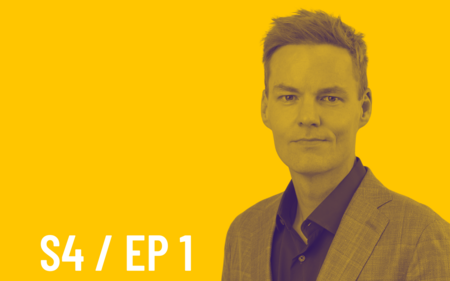
podcast
The Quantum Health Effect: A Behind-the-Scenes Look at Brand Storytelling
January 4, 2024
John Hallock, Chief Communications Officer at Quantum Health, discusses the role CEOs play in PR, what a strategic marketing communications plan should include, and leading …
Read More →
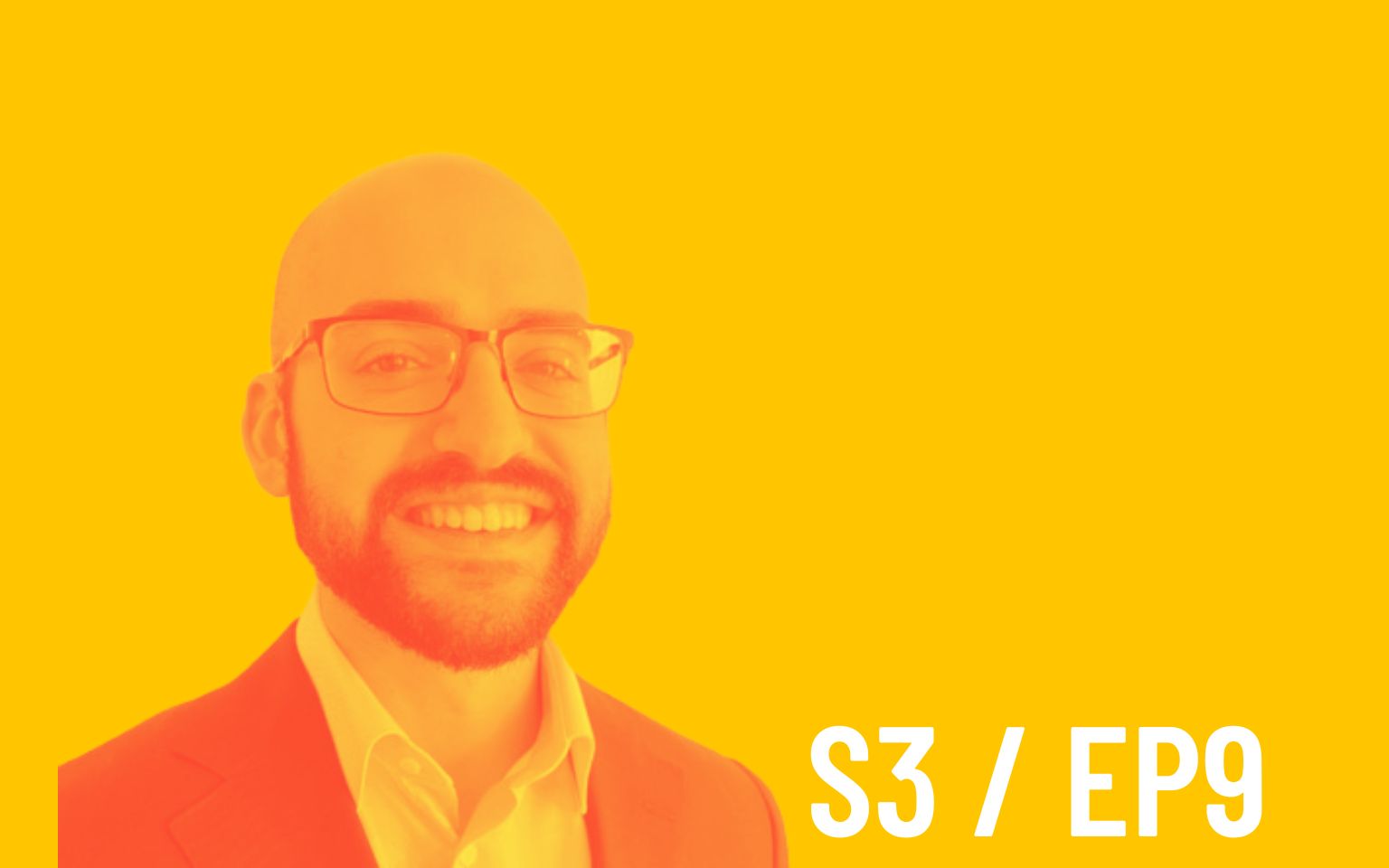
podcast
Why AI is Not Coming for Your Job, the Control Freak Buyer Persona and a Bias for Specialist Agencies
September 20, 2023
Our guest Joe Zappa and host Kriste Goad dive into the measurability of content marketing, AI for marketers, why you should never work with a …
Read More →
Want to be a guest on a future episode?
Share your thoughts directly with our show host, Kriste Goad.

